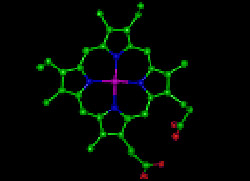cytochromes

Image of Canopus taken by astronaut Donald R. Pettit from the International Space Station. Credit: NASA.
Cytochromes are respiratory pigments found widely in aerobic organisms which transfer energy within cells. They are proteins containing a chelate complex of an iron prosthetic group and a porphyrin system, and so include hemoglobin. Cytochromes undergo a series of oxidation and reduction reactions, transferring electrons from a substrate to each other and finally to an electron-acceptor. In cellular respiration the substrates are the hydrogen-acceptors in the citric acid cycle, the electron acceptor is oxygen, and the energy produced is stored in ATP. See also photosynthesis. Cytochromes are, in fact, the principal route by which atmospheric oxygen enters into cellular metabolism.


